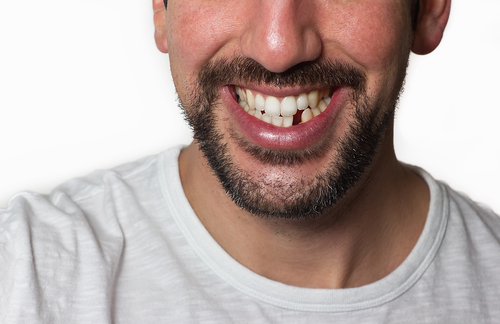 In the fourth article on Smile Design, we will be addressing the complain about STAINS ON TEETH and DISCOLOURED FILLINGS.
In the fourth article on Smile Design, we will be addressing the complain about STAINS ON TEETH and DISCOLOURED FILLINGS.
If you’re not happy with the colour of your teeth, you’re not alone. When people were asked, what they most wanted to improve about their smiles, the common response was to brighten them. Teeth stains can have multiple causes, and because each one is different, the treatments for each should be according to the cause.
Following are the CAUSES and TREATMENTS for Stains on Teeth:
Intrinsic Teeth Stain Removal
Intrinsic stains refer to staining of the dentin (second layer of tooth), the sensitive tissue that lies just below your enamel. This layer naturally takes a yellower or darker color, which can then be seen if the enamel wears away due to poor mouth health. There are many possible reasons for this type of staining, including exposure to tetracycline antibiotics during childhood or physical trauma to your teeth.
These stains originate inside your teeth, so you won’t be able to remove them at home with just a whitening toothpaste. Instead, at-home whitening kits or a professional treatment by your dentist may be able to remove these stains; the active ingredients in these bleaches are meant to remove deep stains in addition to the surface stains that you cannot remove yourself.
Even the most stubborn intrinsic stains can be camouflaged with restorative methods such as Composite bonding or Capping (crowning). Composite Bonding involves bonding of a tooth coloured composite resin to the surface of your stained teeth and then contouring it into the correct shape. Once the resin is cured, smoothed and polished, the original white colour of your teeth is restored. Crowning, on the other hand, involves placing tooth coloured caps on top of your stained teeth, which will hide the stains. Your dentist can help you choose which method is right for you.
Extrinsic Teeth Stain Removal
Extrinsic stains refer to staining of the enamel, the outermost hard surface protecting the more dentin and pulp. Enamel comes into contact with everything you eat or drink, though, and over time it can absorb the pigments left over by these foods and beverages. Common drinks like soda, coffee, tea and red wine and foods containing turmeric can lead to extrinsic stains. Tobacco, whether it’s smoked or chewed, is another possible cause of this type of staining.
Because these stains are on the outer layer of your teeth – unlike intrinsic – you can usually remove them with professional dental cleaning procedure (SCALING) followed by polishing of the teeth surfaces.
To prevent extrinsic stains from recurring, make sure to avoid consuming stain-causing products for atleast two weeks after whitening your teeth.
Age-Related Teeth Stains
Many changes happen throughout the human body with age; teeth are no exception. Specifically, two changes occur in the mouth: The ENAMEL becomes THINNER and DENTIN becomes DARKER. Together these changes cause the teeth to appear DARKER than Normal.
This form of staining isn’t caused by discolouration of enamel, so treatments that can penetrate into the dentin will be required. The dentist may recommend an at-home bleaching kit or professional in-office whitening treatment, as oral bleaches can remove these deeper stains.
TIPS TO PREVENT DISCOLOURATION OF TEETH POST WHITENING TREATMENT:
Avoid stain-causing foods and beverages – coffee, tea, wine, sports drinks, hard candy, berries turmeric containing products and tomato sauce are all foods that can cause tooth discolouration.
Use a straw – when drinking beverages, use a straw to keep stain-causing dyes away from your teeth.
Quit smoking – smoking tobacco can cause teeth to become discoloured. Eliminating tobacco can help keep your teeth bright.